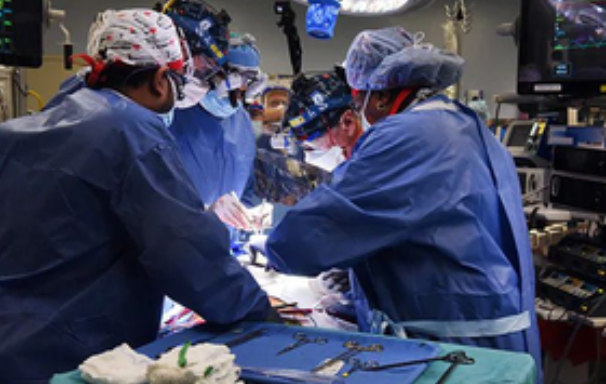Health
Delhi doctors remove tumour from teenager's thigh, prevent leg amputation

New Delhi, June 27
A 16-year-old girl has been given a new lease of life after doctors here removed a large tumour in her left thigh in an eight-hour-long surgery, and prevented her left leg from amputation.
The girl Maya, a student of class XII school and hailing from Najafgarh in Delhi's South West district, was presented to doctors at Sir Ganga Ram Hospital after facing swelling on the back side of her left thigh for a long period.
While small initially, it soon grew in size, restricting her movements like walking, running, and jumping. It gradually also became painful and started causing numbness down the limb.
Doctors subjected Maya to imaging and a core needle biopsy that revealed a soft tissue tumour that was completely encasing the left sciatic nerve, which could prove to be life-threatening if left untreated.
The sciatic nerve is a vital nerve that emerges from the lower back (lumbar and sacral spine) and runs through the gluteus maximus muscle (hips) on both sides and then passes down the back of the thigh and leg supplying muscles of the lower limbs.
"This particular nerve is critical for the functionality of the lower limbs. Considering that the sciatic nerve ran through the mass that encased it completely, the probability of saving this crucial nerve during surgery was dismal or negligible," said Chintamani, Chairman of the Department of Surgical Oncology, at the hospital.
However, the tumour needed to be removed completely to prevent a recurrence. Preservation of the limb was thus a challenge for the doctors, who also extensively counselled Maya for limb-sparing surgery as well as amputation.
Chintamani and the team were able to resect the entire tumour sized 17 x 15 cm, weighing around 2kgs, while saving the sciatic nerve.
"Since the tumour also involved a large chunk of muscles of the posterior compartment of the thigh (hamstrings) we also had to remove that to ensure en bloc removal and muscles from other compartments were mobilised to cover the exposed bone (femur) and the neurovascular bundle," the doctor said.
Although post-operation, she suffered from some temporary weakness in lower limb muscles, it improved with physiotherapy and time.
"Maya is now doing well and walks into the hospital for her checkups and physiotherapy without any significant neurological deficit," Chintamani said.



































